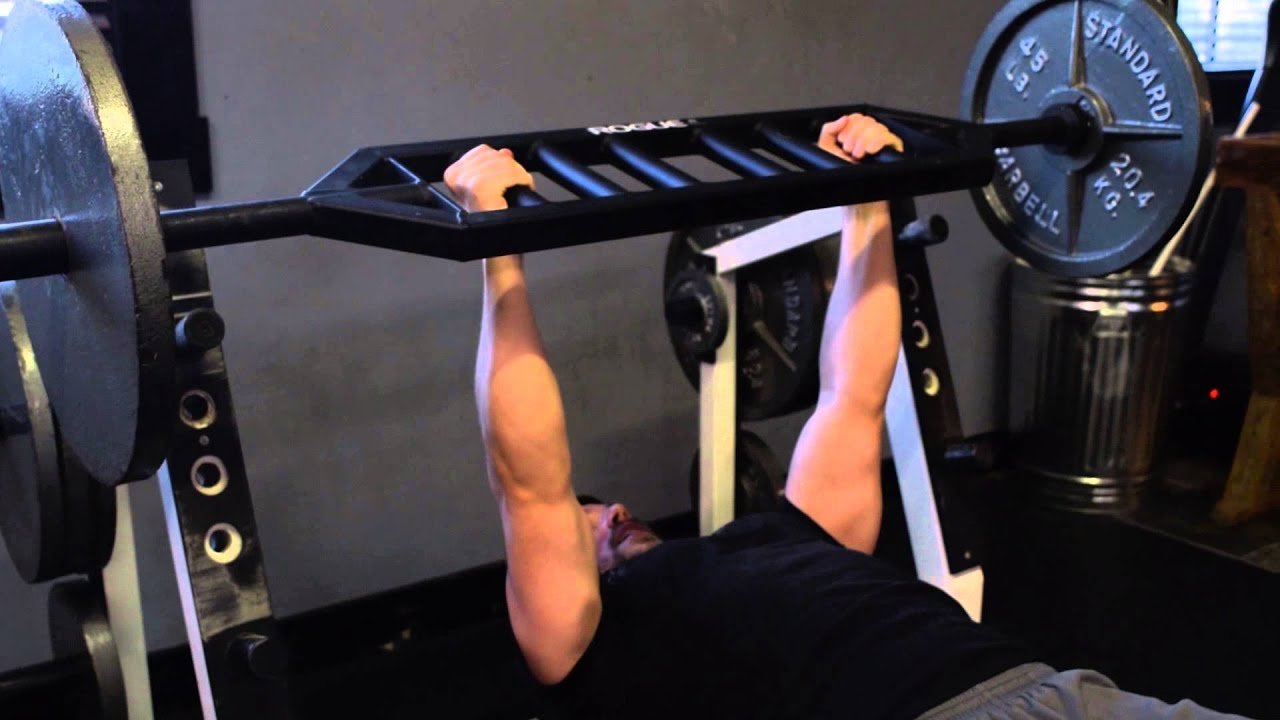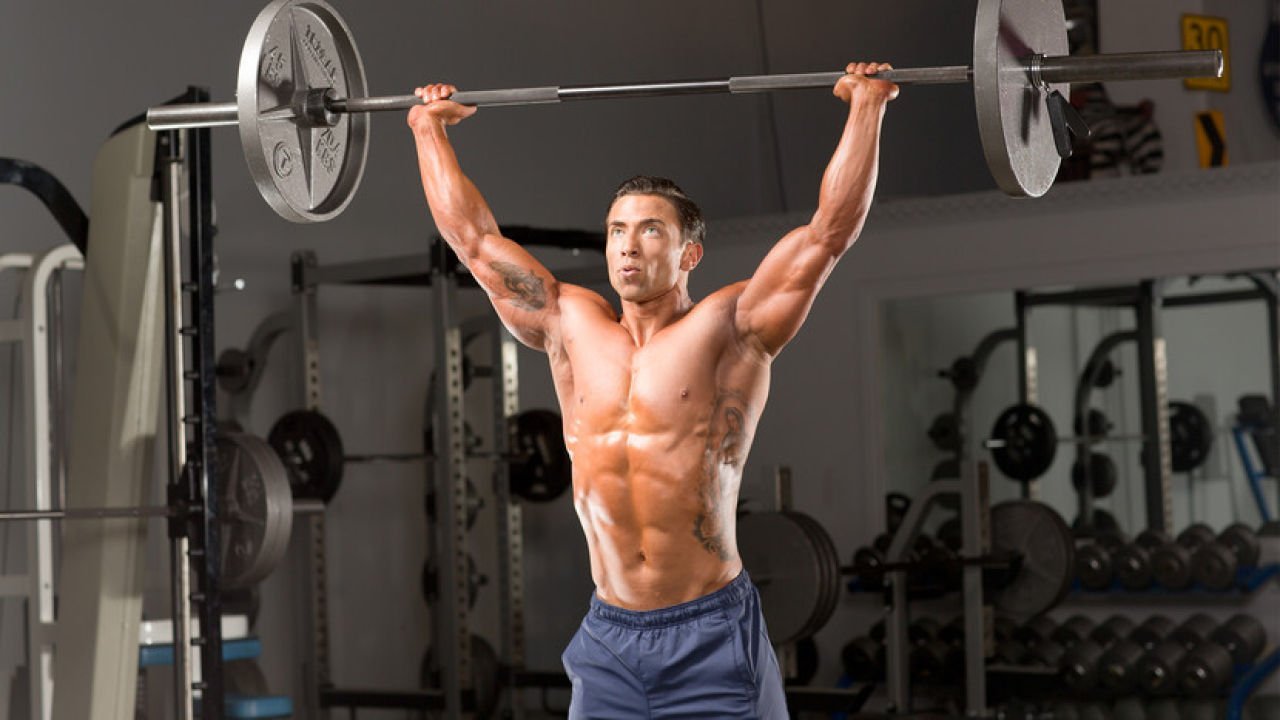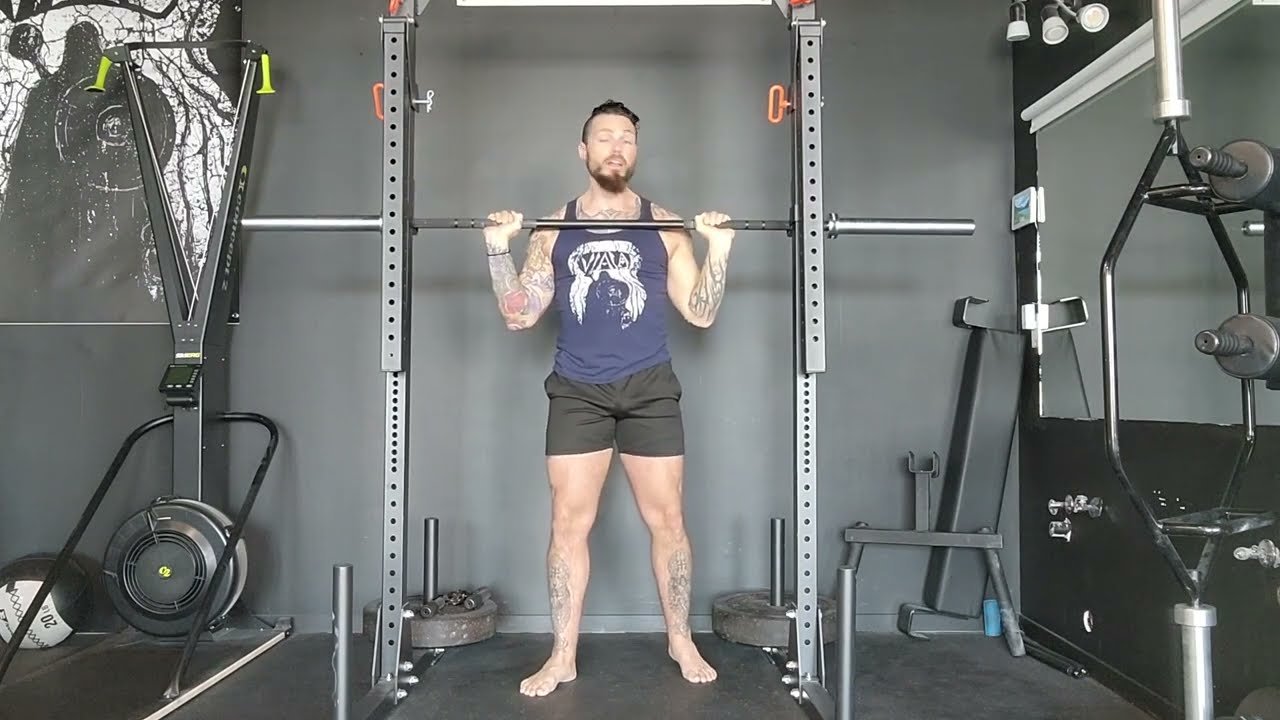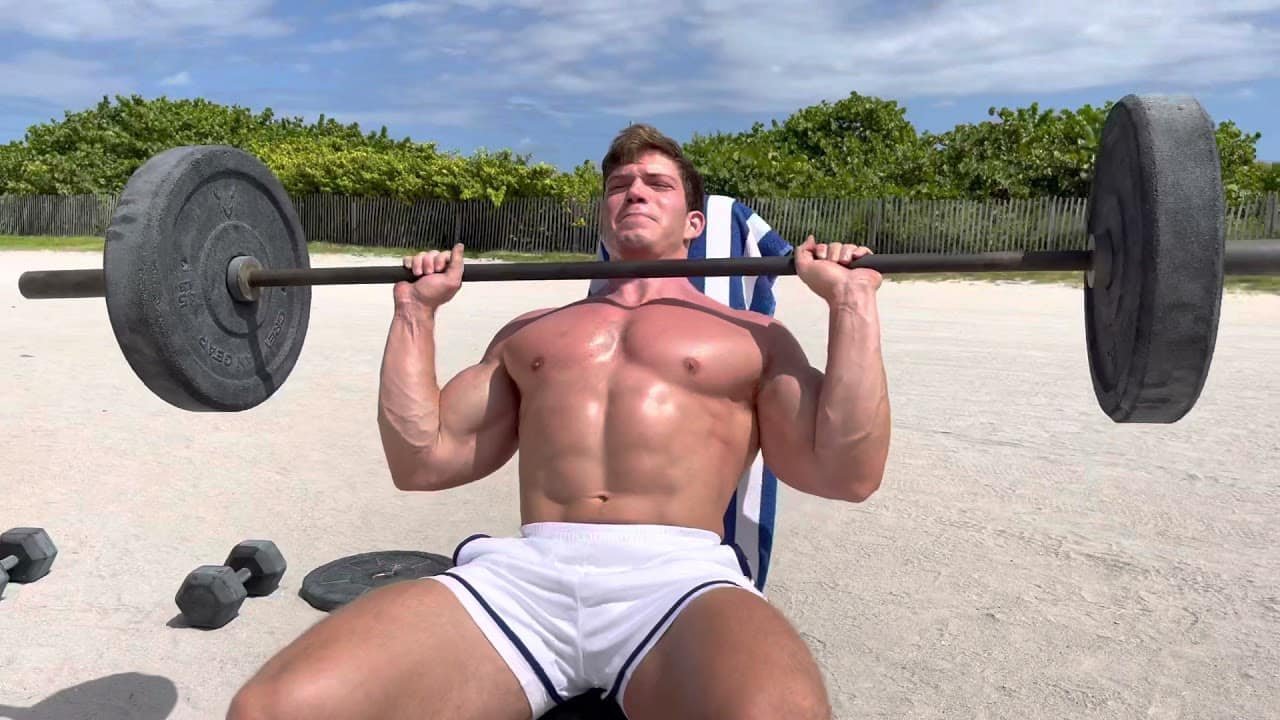The army press, a staple in shoulder training, is understood for its effectiveness in building top body strength and muscle groups. However, incorporating the Strict Military Press variations can beautify mu, scale boom, improve overall energy, and prevent plateaus. Here are ten versions of the Strict Military Press to help you achieve your fitness goals.

1. Standing Barbell Military Press
Description:
The status barbell Strict Military Press is a classic shoulder exercise that targets the deltoids, triceps, and top chest. It is performed by way of urgent a barbell overhead from shoulder height.
Benefits:
- Enhances overall shoulder strength
- Improves core stability and balance
- Engages multiple muscle groups
Execution:
- Stand along with your toes shoulder-width apart.
- Hold a barbell at the shoulder top with an overhand grip.
- Press the barbell overhead till your palms are extended.
- Lower the barbell back to shoulder height and repeat.
2. Seated Dumbbell Press
Description:
The seated dumbbell press isolates the shoulders more efficiently than the status version, considering more attention on muscle hypertrophy.
Benefits:
- Reduces the risk of lower back strain
- Allows for a more excellent range of motion
- Helps to correct muscular imbalances
Execution:
- Sit on a bench with a lower back guide.
- Hold a dumbbell in every hand at shoulder height.
- Press the dumbbells overhead till your arms are fully prolonged.
- Lower the dumbbells again to the shoulder top and repeat.
3. Arnold Press
Description:
Named after Arnold Schwarzenegger, the Arnold press is a version that mixes a rotational movement with a conventional Strict Military Press, focused on all three heads of the deltoid.
Benefits:
- Engages all parts of the shoulder
- Enhances shoulder mobility
- Provides a unique challenge to the muscles
Execution:
- Sit or stand with a dumbbell in each hand, palms going through your frame.
- As you Strict Military Press the dumbbells overhead, rotate your fingers outward.
- At the top of the movement, your palms should face forward.
- Reverse the motion as you lower the dumbbells and rotate your palms back toward your body.
4. Push Press
Description:
The push press involves a slight leg drive to help lift the barbell overhead, allowing you to use more weight than the strict military press.
Benefits:
- Increases power and explosiveness
- Engages the legs and core
- Helps to break through strength plateaus
Execution:
- Stand with your feet shoulder-width apart and preserve a barbell at the shoulder top.
- Bend your knees slightly and use your legs to help press the barbell overhead.
- Lock out your hands at the pinnacle of the motion.
- Lower the barbell back to shoulder height and repeat.
5. Z Press
Description:
The Z press is performed while seated on the floor, eliminating the ability to use your legs for assistance and forcing greater engagement of the core and shoulders.
Benefits:
- Enhances core strength and stability
- Improves shoulder mobility
- Reduces lower back strain
Execution:
- Sit on the floor together with your legs in front of you.
- Hold a barbell at the shoulder peak with an overhand grip.
- Press the barbell overhead till your arms are extended.
- Lower the barbell back to shoulder height and repeat.
6. Landmine Press
Description:
The landmine press involves pressing a barbell that is anchored at one end. This variation allows for a more natural pressing motion and can be easier on the shoulders.
Benefits:
- Reduces shoulder joint stress
- Allows for unilateral training
- Enhances functional strength
Execution:
- Position one end of a barbell in a landmine attachment or corner.
- Hold the other end of the barbell at shoulder height.
- Press the barbell overhead at a slight angle.
- Lower the barbell back to shoulder height and repeat.
7. Single-Arm Dumbbell Press
Description:
The unmarried-arm dumbbell press involves pressing one dumbbell overhead at a time, which facilitates discovering and correcting electricity imbalances.
Benefits:
- Enhances unilateral strength and coordination
- Engages the core for stability
- Provides a unique challenge to the shoulders
Execution:
- Stand or sit down with a dumbbell in a single hand at the shoulder peak.
- Press the dumbbell overhead until your arm is extended.
- Lower the dumbbell, return to shoulder height, and repeat.
- Switch arms and repeat.
8. Behind-the-Neck Press
Description:
The back of the neck press includes pressing a barbell from behind the head, which efficiently objectives the rear deltoids and top traps.
Benefits:
- Targets the rear deltoids and traps
- Enhances shoulder mobility
- Provides a unique challenge to the shoulder muscles
Execution:
- Stand or sit down with a barbell at the back of your neck at the shoulder top.
- Press the barbell overhead till your hands are entirely extended.
- Lower the barbell back to behind your neck and repeat.
Caution:
- Ensure proper shoulder mobility before attempting.
- Use lighter weights to avoid injury.
9. Neutral-Grip Dumbbell Press
Description:
The neutral-grip dumbbell press includes pressing with your arms, dealing with every other, which can be a greater cushty for people with shoulder issues.
Benefits:
- Reduces shoulder joint stress
- Engages the triceps and upper chest
- Allows for a natural Strict Military Press motion
Execution:
- Stand or sit with a dumbbell in every hand at shoulder height, hands dealing with every difference.
- Press the dumbbells overhead until your palms are fully extended.
- Lower the dumbbells back to the shoulder peak and repeat.
10. Kettlebell Press
Description:
The kettlebell press uses kettlebells instead of dumbbells or a barbell, which may provide an exclusive stimulus to the muscular tissues due to the unique form and weight distribution.
Benefits:
- Enhances grip strength and stability
- Engages the core and shoulders
- Provides a unique challenge to the muscles
Execution:
- Stand or sit with a kettlebell in each hand at the shoulder top.
- Press the kettlebells overhead till your hands are fully extended.
- Lower the kettlebells, return to shoulder height, and repeat.
Integrating Variations into Your Routine
Incorporating these variations into your workout routine can help prevent plateaus and provide a comprehensive approach to shoulder training. Here are some tips for effectively integrating these exercises:
Variety is Key:
- Rotate between different variations every few weeks to keep your muscles challenged.
- Aim to include at least two or three variations in your weekly shoulder workout.
Focus on Form:
- The proper shape is crucial to prevent damage and maximize muscle activation.
- Start with lighter weights to grasp the technique earlier than progressing to heavier hundreds.
Progressive Overload:
- Gradually grow the weight, reps, or units over time to continue making development.
- Use an exercise magazine to signal your progress and regulate your recurring thus.
Balance Your Workouts:
- Using physical games that focus on the front, center, and rear deltoids will ensure you’re schooling all parts of your shoulders.
- Combine pressing actions with pulling exercises to maintain shoulder health and stability.
Listen to Your Body:
- Pay interest to any signs of soreness or pain, and regulate your physical games as wished.
- Take rest days to permit your muscle tissues to get better and grow.
Sample Shoulder Workout Routine
Here’s a sample shoulder workout routine that incorporates several of the variations mentioned above:
Warm-Up:
- 5-10 minutes of light cardio (e.g., jogging, jumping jacks)
- Dynamic stretches for the shoulders and upper body
Main Workout:
- Standing Barbell Strict Military Press: 3 sets of 8-10 reps
- Seated Dumbbell Press: 3 sets of 10-12 reps
- Arnold Press: 3 sets of 12-15 reps
- Landmine Press: three units of 10-12 reps in step with arm
- Single-Arm Dumbbell Press: three sets of 10-12 reps in line with the arm
Accessory Work:
- Lateral Raises: three units of 15-20 reps
- Rear Delt Flyes: 3 sets of 15-20 reps
- Face Pulls: 3 sets of 12-15 reps
Cool Down:
- Static stretches for the shoulders and upper body
- Foam rolling releases tension and improves mobility
Conclusion
The Strict Military Press and its versions are vital for all of us looking to build solid and well-developed shoulders. By incorporating exclusive varieties of military media into your routine, you could goal your muscle mass from diverse angles, save your training plateaus, and make specific balanced shoulder development. Remember to prioritize proper shape, progressively increase the intensity of your workouts, and listen to your frame to obtain satisfactory effects. Happy lifting.
FAQs about Strict Military Press
How regularly must I incorporate army press versions into my exercise routine?
It depends on your ordinary workout plan; however, shoulder physical games, including military press variations, commonly can be blanketed 1-2 times per week. Ensure ok rest among periods to permit muscle recovery and growth.
Is it necessary to perform all versions, or can I persist with just a few?
You want to perform only some of the variations in a single exercise. Choose two to three variations that target exceptional components of the shoulders and rotate them periodically to keep your muscle groups challenged and prevent plateaus.
Can beginners perform military press variations?
Yes, novices can carry out army press variations. However, they should begin with lighter weights to be aware of mastering the proper form and technique. It can also be helpful to work with a trainer to ensure accurate execution.
What are the common mistakes to avoid when doing military press variations?
- Using too much weight can compromise form and increase injury risk.
- Arching the lower back excessively to lift the weight.
- Failing to engage the core for stability.
- Lowering the weight too quickly reduces muscle engagement and control.
- Neglecting shoulder mobility and flexibility can lead to poor form and potential injury.









